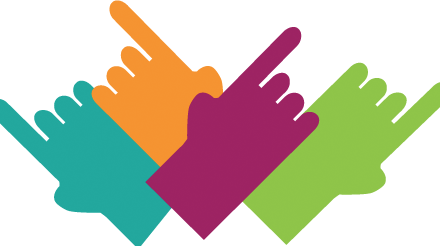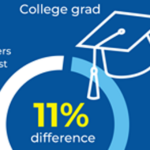Innovations often evolve out of a series of what may seem to be minor developments. As a consequence, instead of waiting for disruptive products and technologies, we need to create the conditions for individuals, groups, and organizations to adapt, innovate, and improve all the time.
— Thomas Hatch, Innovation at the Core
Principals pick up the phone to call preschool directors to discuss specific children. Communities use a new early learning partnership as a platform to win new grant funds. A district invites community-based preschool teachers to share information about rising kindergarten students, significantly influencing classroom assignment decisions.
These are all examples of activities that have emerged out of the work of Birth-3rd partnerships, activities that were not proposed in grant proposals or explicitly planned as partnership strategies. These activities have come about as a result of new relationships — both interpersonal and institutional — developed through Birth-3rd partnerships. Improving learning and care during the primary years from birth through 3rd grade requires implementing strategies that lead to positive outcomes for children and build momentum for continued collaborative work. Effective implementation requires new interpersonal relationships and new institutional arrangements that build local and regional capacity to sustain ongoing improvement and innovation over time. Birth-3rd reform is in effect asking for Early Years Collaboratives that are broader, more robust, and more ambitious in scope than typically has been the case, new institutions and new “infrastructure” that can only be effective if they’re undergirded by social relationships and trust.
Collaboration between school districts and community-based preschools on preK-3rd alignment is a significant component of what I call the Primary Years Agenda. As communities around the country advance Birth-3rd work and as 12 communities in Massachusetts continue developing Birth-3rd partnerships with funding from the Department of Early Education and Care (EEC), it is helpful to keep in mind the interconnected relationship between implementing good strategies and programs and developing institutional relationships and capacity. On the one hand, there is a danger of only of building relationships and never get around to implementing effective strategies. On the other hand, as the examples from Massachusetts and other communities described below suggest, it would likewise be a mistake not to be intentional about developing social and institutional relationships — relationships that build expertise and capacity that in turn lead to ongoing improvement and innovation.
Not exactly intended consequences: Relationships that “spill over”
A number of Birth-3rd partnerships in Massachusetts have carried out activities that are surprising — in a sense, extra — from the standpoint of their grant responsibilities and stated strategies. These kinds of extra activities, such as the examples below, are sometimes referred to as “spillover effects.”
Simple invitation, concrete impact. The Somerville Public Schools has for some years held an annual “speed dating” event in which district prekindergarten teachers went from table to table meeting with kindergarten teachers to discuss the rising kindergarten students that would be transitioning from one teacher to the next. As the Birth-3rd Alignment Partnership was meeting one day, the principal of the Capuano Early Childhood Center came up with the idea of inviting the community-based prekindergarten teachers as well. At the now larger Teacher Talks event, the community-based teachers share information about their children, including, for instance, which ones had strong social-emotional skills and could be class leaders and role models. This information influenced classroom assignment decisions as potential leaders were distributed across kindergarten classrooms.
One-to-one relationships and joint decision making. As a result of relationships formed in Springfield’s early childhood professional learning community, principals and preschool directors began calling each other to discuss children they shared in morning and afternoon programs. On a more structural level, the Birth-3rd Alignment Partnership has engaged in a collaborative decision-making process that includes district and community-based teachers in choosing a new preschool curriculum and making a joint request to the city for funding for the new curriculum.
From partnership strategy to citywide agenda. Lowell’s alignment partnership began with a strategy focused on two communities. Its diverse Leadership Alignment Team found common ground around the issue of community school readiness. The team reached out to many other city institutions, including health, mental health, social services, and homelessness organizations in addition to city government and even the fire department. With these organizations on board, Lowell has now developed a city school readiness definition and a full-fledged city school readiness agenda that has considerable momentum.
Pooling resources to support parents. Spearheaded by the local United Way, several early childhood organizations in Pittsfield have joined together and pooled resources in order to support families in their parenting roles. Two home visiting organizations — Healthy Families and Parents as Teachers — joined with the local Head Start organization, the Community and Family Engagement coordinator, and the United Way to offer a series of evening Parent Cafes that were organized around the five protective factors of the Strengthening Families model. Each organization contributed different resources and undertook different responsibilities related to the workshops, events that provided more supports and were higher profile in nature than any of the organizations could have achieved individually.
From pilot group to stakeholder body. To support the implementation of the Boston Public School’s (BPS) preschool curriculum in community-based preschool classrooms, Boston’s partnership convened a monthly meeting of the directors of the participating preschools. This group has developed over time and has begun to play other roles. The directors asked to pilot a BPS transition form that had previously gone unused. Recently the partnership convened a special meeting to solicit input from this group on Boston’s emerging universal prekindergarten plan, and thus the directors are now serving as an important stakeholder body for the school district.
The role of relational trust in innovative systems
Large-scale changes come from better cross-sector collaboration rather than the isolated efforts of individual organizations. (Kania and Kramer, 2011)
These examples of informal, unplanned collaboration help illustrate the role of trust and relationships in capacity-building and organizational change. Often referred to as social capital, these types of social relationships are critical to improving educational outcomes. A large study of Chicago elementary schools found that relational trust was a key factor in schools that built professional capacity, developed a student-centered learning climate, and strengthened parent-community ties. A lead author of that study, Tony Bryk, refers to relational trust as a “lubricant for organizational change” and a “moral resource for sustaining the hard work” of local educational improvement.
Often overlooked, social capital is an important resource within organizations but also across organizations locally and regionally. Large-scale change of the type that the Birth-3rd movement is calling for requires cross-sector collaboration across the mixed delivery system of public and private early childhood education. Such cross-sector collaboration was integral to the success that Montgomery, Md., one of Birth-3rd’s leading edge communities, has achieved in dramatically reduced achievement gaps while raising learning outcomes for all. Montgomery County’s former superintendent, Jerry Weast, set out to unify a mixed delivery system through an inclusive approach to collaboration and a deliberate blurring of lines across institutions, leading to a culture of shared accountability and deep engagement by stakeholders — an example of social capital acting, in Bryk’s language, as a “moral resource for sustaining hard work” (Childress, 2009; Marietta, 2010).
Montgomery County’s experience is consistent with research on high-performing regions and countries that shows that a common denominator across successful educational systems is the extent to which they invest in social capital by building local and regional networks. Social capital is important in these systems, says Thomas Hatch, in that it leads to sharing resources, information, and expertise while building political and public support. Through inclusive, blurred lines systems such as Montgomery County’s they cultivate collective responsibility for children and an understanding of schooling as, in Hatch’s words, “a communal and societal endeavor.” Facilitated by relational trust and shared understanding, expertise and will and capacity grow, leading to ongoing improvement and innovation. Hatch is in effect drawing a line between informal relationships in which principals call preschool directors in Springfield and innovations in strategy like Lowell’s emergent community school readiness agenda.
ABOUT THE AUTHOR

David Jacobson
DAVID JACOBSON is a principal researcher and technical assistance adviser, Education Development Center, Waltham, Mass. He writes the P-3 Learning Hub blog .










